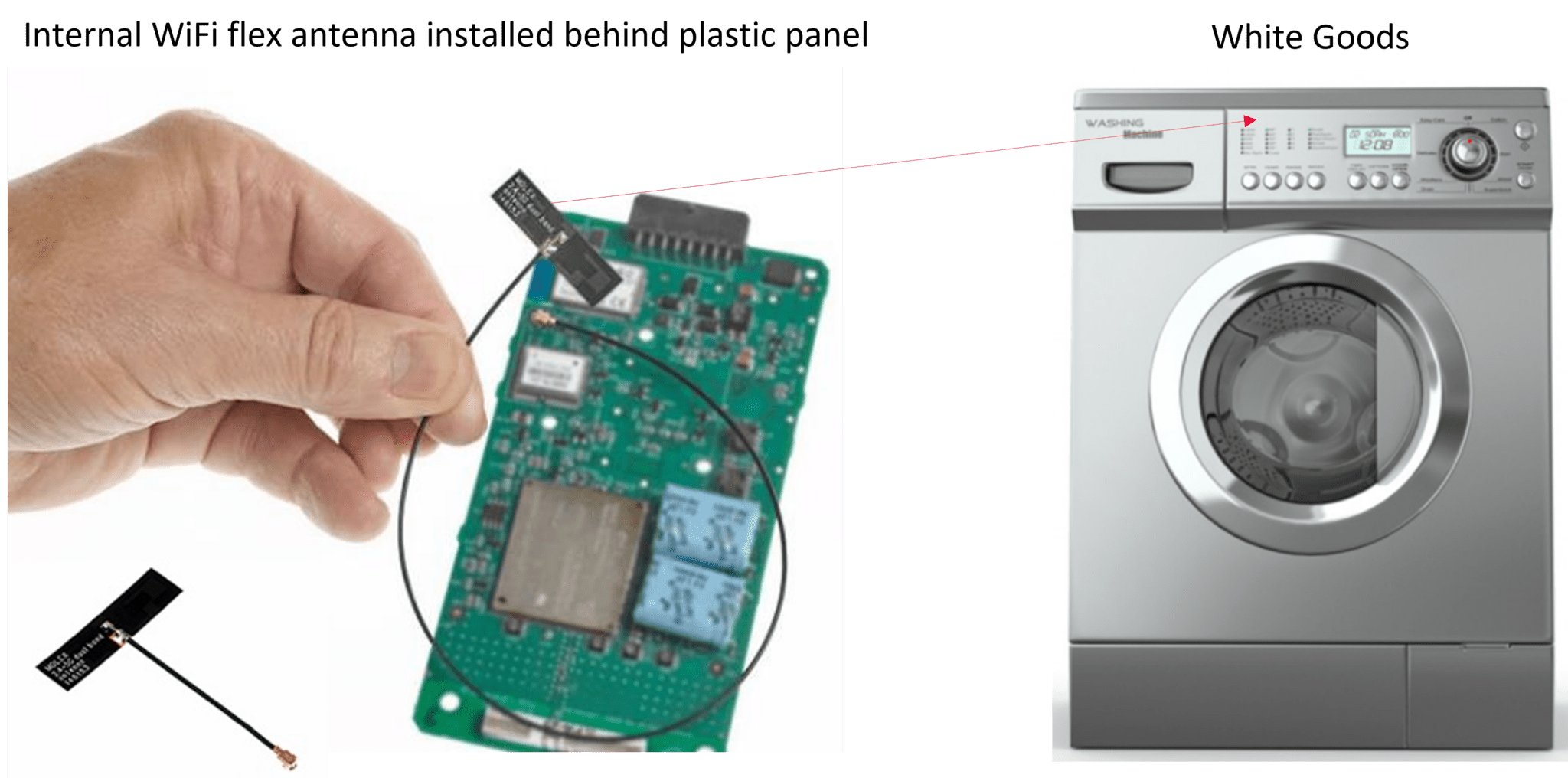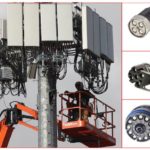Antennas: The Heart of the IoT
Antennas are crucial to the function of connected devices. Address them early in the design process for a smooth and successful outcome.

Antenna systems are gaining prominence as new opportunities emerge to meet the expanding telecommunications needs of IoT and 5G applications. According to a survey by TE Connectivity, the top drivers of antenna development and innovation are efficient spectrum use, enhanced service quality, cost optimization, and transparent operations across technologies.
Over 170 engineers responded to questions about their biggest challenges when designing wireless systems, what designers look for in antenna products and the importance of antenna choice in wireless systems. Efficiency and bandwidth topped the list of challenges, highlighting the need for components that increase throughput and optimize efficiencies. Product performance was identified by many respondents (about 75%) as the most critical selection criterion, also considered by many to be more important than the cost of the product. The importance of antenna systems was further confirmed by more than 60% of respondents saying they choose antenna products at the start of the design process—ahead of other components required for high-performance wireless solutions.
A Bit About Antennas
The main job of the antenna is to convert electric signals to RF signals. “It’s almost like an airport runway. The signal is on the board and when it hits the antenna, it is sent into the air (space),” explained Matt McWhinney, business development manager for micro solutions at Molex. Conversely, the antenna also takes signals from the air (space) and converts them from electromagnetic signals into electronic signals.
Efficiency is the measurement used to compare one antenna to another. Many experts consider at or above 50% efficiency very good. Measured ‘effective’ efficiency is a function of how well the antenna performs once installed and embedded in a device. This is important to note because several factors can affect antenna performance, so choosing the best option is not as simple as looking at a spec sheet. “The presence of other metals [like batteries or shields] nearby, as well as where the antenna is placed on the system and how it is orientated [the angle], and a few other factors, can have a net negative impact if an antenna is sub-optimally integrated into the system,” McWhinney said.
Trends and Challenges
Miniaturization. One trend that presents obvious challenges is the desire to embed RF into small devices. One example is the connected doorbell, which has so many components in tight proximity within a small space. “The design challenge is how to best integrate the antenna, or antennas, into that rather small package. What can I keep? How can I most effectively locate the antenna as far away from the battery or from the shield covering the microprocessor?” said McWhinney. Additionally, if redundant or additional antennas are needed, the two ideally would have some separation.
In many of these miniature products, especially those that use LTE or 5G signals, the antenna requires a ground plane to perform well. If an LTE/5G SMT (aka “chip”) antenna is used, the ground plane (the PCB) is ideally at least the size of a business card. If the PCB/ground plane is significantly smaller (like a watch or small medallion), essentially there isn’t enough available real estate to allow for good RF performance. Depending on which application/frequencies and antennas are used, embedding an antenna in a small device can get quite challenging – and even very expensive if a custom antenna is needed. McWhinney explained that, for example, to embed a cellular circuit into a dog collar cost effectively, the designer must begin with the smallest (but most efficient) antenna possible and then get creative to ensure that the ground plane is sufficient. The designer might choose to extend the ground plane beyond the PCB, perhaps into the collar itself. In that case, the collar might need to be somewhat metallic to virtually extend the size of the ground plane.
Always available. Consumers have an expectation that their device will always have a signal. This creates a scenario where it can make sense to pursue redundant RF options (different frequencies, protocols, alternate antenna-RF circuits). One example of redundancy includes using MIMO (multiple input, multiple output). Simply put, this means more antennas. One antenna might radiate well but will have some blind spots; multiple antennas won’t likely have the same blind spots. Another option is adding alternate RF circuits/antennas, Bluetooth, or Wi-Fi and LTE, to act as a backup. LoRa (long range radio) is also an option when LTE and 5G are too difficult to integrate.
The Three Types of Antennas
Example of antenna integrated onto fitness tracker PCB (Chip antenna) from Molex.
There are three types of antennas. The SMT, often called a “chip” antenna, is soldered to a PCB. SMTs typically provide the best efficiency, depending on how well they are designed into the system (i.e., where they are placed and what is around them). SMTs tend to have a slightly lower cost (especially in high volumes) and offer more degrees of design flexibility than other antenna types but can be difficult to integrate optimally into a system.
The second type is an internally cabled antenna. This type is flexible or could even be a printed circuit board. It features an antenna, a coax wire, and a micro connector. These antennas are often easier to integrate as design choices are limited to simple factors such as selecting the proper connector type and cable length, which ensures the antenna is the right size for placement inside the device. “Then it’s really a matter of what I would I call ‘rabbit ear, TV antenna tuning’ – such as how we often find optimal antenna orientation (placement inside the module). A simple process of trying a location, testing, and then repeating until satisfied with performance is the way to go,” said McWhinney.

Example of ‘internally cabled’ antenna used on white goods (Wi-Fi antenna) from Molex.
The third type is an external antenna, what might be seen poking out of a router. These are not generally used in IoT applications but are needed if the device is made of metal, as internal antennas cannot transmit through metal.
Antennas are identified and categorized by their rated frequency but to make it easy, antennas often are simply noted by RF protocol, such as Wi-Fi or Bluetooth. Another consideration is bandwidth, how much data is needed, but when looking at bandwidth needs, designers will first identify which RF protocol, then move to antenna selection. It is worth noting that most IoT devices require the exchange of only a small amount of information, such as for sensing, taking control, or collecting measurement data, as in the case of wearables. So, for many IoT devices, low bandwidth will most likely be sufficient.
For applications where high bandwidth is required, RF protocols such as Wi-Fi and LTE/5G are good choices. Also beware of real-world issues, such as “overbooked” Wi-Fi networks (typically in the 2.4 GHz frequencies). High bandwidth applications would be best served if Wi-Fi is in multiple frequencies (i.e., 2.4 and 5 GHz) and the antennas selected are supportive. Similar considerations exist with LTE/5G data where frequency selection is important.
Start Early. Ask the Experts
Because each application has its own unique challenges, working with an RF antenna expert early in the design process is critical for success. Ensuring antenna efficiency and performance requires multiple design-test-redesign-retest iterations ideally handled by those who deeply understand the impact of all the device components on the antenna. Whether that is an in-house RF expert, a proven supplier of RF electronics/antennas, or a consultant, a worthy expert will have equipment to measure RF performance, including an antenna test chamber. Even if the expert is not fully engaged with testing, it’s a good strategy to have. In the end, McWhinney said, this will help ensure the IoT device has excellent wireless performance and is completed on time.
To learn more about the suppliers mentioned in this article, visit the Preferred Supplier pages for Molex and TE Connectivity.
Like this article? Check out our other Antennas, and IoT articles, our Sensors & Antennas Market Page, and our 2022 Article Archive.
Subscribe to our weekly e-newsletters, follow us on LinkedIn, Twitter, and Facebook, and check out our eBook archives for more applicable, expert-informed connectivity content.
- Sealing Success: Overmolding for More Secure Connections - April 23, 2024
- Medical Cable Assemblies Product Roundup - April 23, 2024
- Mezzanine Connectors Product Roundup - April 16, 2024





